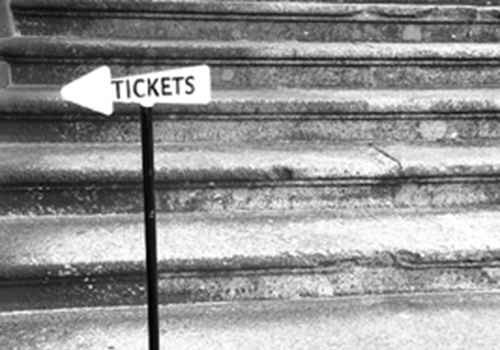I'm reliably informed, that the question of ‘’what you do?’’ is to be expected when meeting anyone within the Royal Family. It’s a good question, because it helps to position ‘one’ to begin a productive two-way discourse.
But how many of us can give a meaningful definition of what we actually do – one that truly speaks to our usefulness? And how can organisations create better clarity around roles and responsibilities, in a way that shows the value each role brings?
A past client once shared how his mother had described what he did at a family dinner party as ‘he’s great with phones!’. He had just been appointed CEO of one of the most globally successful mobile phone companies. Whilst initially deflated by her view of what he did, he decided it was possibly the best description of his new appointment and why he was right for the role.
Getting clarity on roles across an organisation is a common topic of discussion with our clients, and often the underlying reason for things not going as smoothly as they could. As we delve a little deeper, several key themes emerge which can help us better understand why this clarity is important and how we might go about finding it.
Leaders can lead
When leadership roles are clear, there is less ambiguity around who sets the direction and priorities and there are clear expectations regarding who is accountable for what. This not only helps leaders be effective in their roles and not get in each other’s way, but also helps teams know who to approach for guidance, support and decision making.
In Japan, ‘who are you and what do you do’ is the opener to many business conversations, using both an exchange of business cards and a respectful depth of bowing. It serves to facilitate a clearer understanding of each other’s’ roles ahead of a potential key meeting or conversation together.
During my years in Japan, I must have exchanged many boxes of cards, respectfully honouring the useful opening ceremony. My colleague John Whaley (who I won’t embarrass by naming) was on his first visit to Japan, when being greeted by a line-up of key executives in Tokyo, muddled the cards he was giving, with the ones he was receiving. As a result, the Japanese senior board were inadvertently given each other’s cards back to them. Seeing John introduce himself to the Japanese president, as his own Company’s Financial Director from Osaka was an interesting moment in the negotiations!
Communication is streamlined
When individual roles are clear, everyone knows who should be doing what, so time and effort isn’t wasted on debating what action should be taken and by whom. Communication can then be streamlined to sharing updates or progress, addressing any issues or identifying new ideas and opportunities. Critically it also allows individuals to create a better understanding of the role and responsibility they have and can deliver to and redirect activity or discussions to the right people for the areas of responsibility that are not covered by their role and remit.
During the decline of M&S at the end of the last century, I was part of the Senior team and therefore subjected to endless advice and input at both business meetings and social gatherings, on what was wrong and what urgent repairs the Company should be making. Whilst some of the ideas were useful, I wasn’t always able to usefully respond in a way they wanted. For moments of much needed respite, I now admit that I resorted at times to say that I was a dental hygienist.
Stuff gets done!
In busy environments, small important tasks are in danger of being overlooked but are crucial in maintaining operational efficiency. When people are clear on their responsibilities, they can attend to them, limiting the risk of activity being either duplicated or falling between the gaps.
Collaboration is easier
When everyone is aware of their own role and that of others, teamwork becomes a lot easier. Individuals can play to their strengths in their area of responsibility and call upon those whose roles might be supportive or enabling. It also helps to minimise power struggles and potential conflict as people are not in competition for recognition or the space to do what they need to do.
Greater agility
By establishing clear primary roles, teams can allow for greater flexibility on secondary responsibilities and tasks. This helps people ‘cover other bases’ when resources are stretched, issues arise, or one area becomes particularly busy. It also gives people the opportunity to apply and develop their skills and experience ‘out of role’, ultimately supporting succession and the development of the organisation’s overall capabilities.
Engagement and happiness
When people have a clear understanding of their roles, they are more likely to feel valued and be more easily recognised for their contribution. Knowing how and where you can be useful helps people focus on what matters most, use their strengths in different ways and learn and adapt more effectively. The clarity can give a sense of purpose, helping teams feel more connected to what the organisation is trying to achieve and more engaged, motivated and happier in their day-day activity. When roles are unclear, it can cause confusion, stress and uncertainty, or sometimes fear and withdrawal as the visibility and recognition of their value is clouded or unforthcoming.
Our clients are increasingly concerned about recruiting & retaining employees and helping them to reach their potential through their roles in the organisation. With rising levels of employee dissatisfaction and attrition, the answer coming from employees to the question ‘what makes you stay with an organisation?’ is nearly always linked to ‘feeling of value’
How can we clarify roles and responsibilities?
We’ve discovered through our balance work with clients that getting clarity on who we are, what we do and why we do it as an organisation, is a very good starting point.
It helps clarify the role and purpose for the organisation and provides a framework against which leaders can then clarify their primary roles – focusing on what matters most and identifying the skills, experience or type of person who would be the best fit.
When everyone’s role is connected in a clear and simple way to what the business is trying to achieve, with specific areas of accountability and decision-making, people can understand where they fit in and how they can be useful. In response, leaders can more easily divide and conquer the decision making and reward and recognise those fulfilling their roles.
When this clarity is missing or blurred, there can be a careless duplication of effort, a trespassing of responsibilities and confusion starts to reign, with the effectiveness of the organisation becoming potentially dysfunctional.
We firmly believe that being able to answer simply and clearly ‘this is what I actually do’, is of huge benefit – both in being able to add value and be valued in return.
This simple question provokes a deeper debate around the importance of clarifying roles and responsibilities to help us be useful and feel of value.

We’re a small, tight team of experienced consultants, who have helped leaders and organisations through the best and the worst of the past thirty years.

We help you create balance - the ability to adjust your position relative to the world around you, so you can survive, succeed and keep moving forward.

Where we share our client stories from the past 30 years.

Sales and Ticketing teams are designed to sell tickets. So, when life shifts overnight to refunds & new dates, it’s a business model re-think. But… it still all starts with a ticket